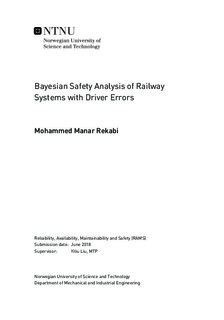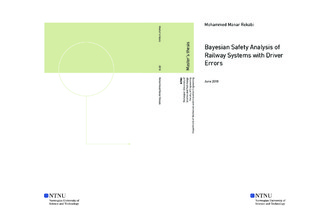| dc.description.abstract | The main objective of this thesis is to improve safety in railway systems through studying and understanding the train drivers tasks and their common errors.
A literature review is conducted to develop a deep understanding of driver errors, as well as to recognise the different methods and techniques used to identify and quantify these errors. The most important issue is that of finding a method that can be used to build a model to quantify drivers errors, taking into consideration the types of drivers tasks and the characteristics of factors that can affect driver reliability.
Different approaches of classifying and analysing driver errors are reviewed, as well the factors that affect driver performance. The present thesis also explains the concept of hazard identification and presents different models used for illustrating accident causality particularly the STAMP model. A comprehensive overview of the STPA method under the STAMP model is presented, along with how it could be applied for controllers and humans. Quantitative risk assessment, along with some methods for quantifying human errors, are overviewed, and a Bayesian network is selected to study the effects of the identified driver errors.
After a detailed assessment of the literature, STPA is found as a suitable method of hazard identification. A Bayesian network is employed to model the hazardous events and quantify safety analysis. The benefits of applying these methods in railway systems and in the context of human error are also discussed.
The case study aims to present a detailed quantitative safety analysis at ERTMS system levels 1 and level 2, including driver errors. The STPA and Bayesian methods are implemented to identify the hazards and quantify the probability of hazards when trains fail to stop at red signals. The data used in this quantitative analysis depends mainly on assumptions.
Finally, several avenues for further research are also discussed. | |

